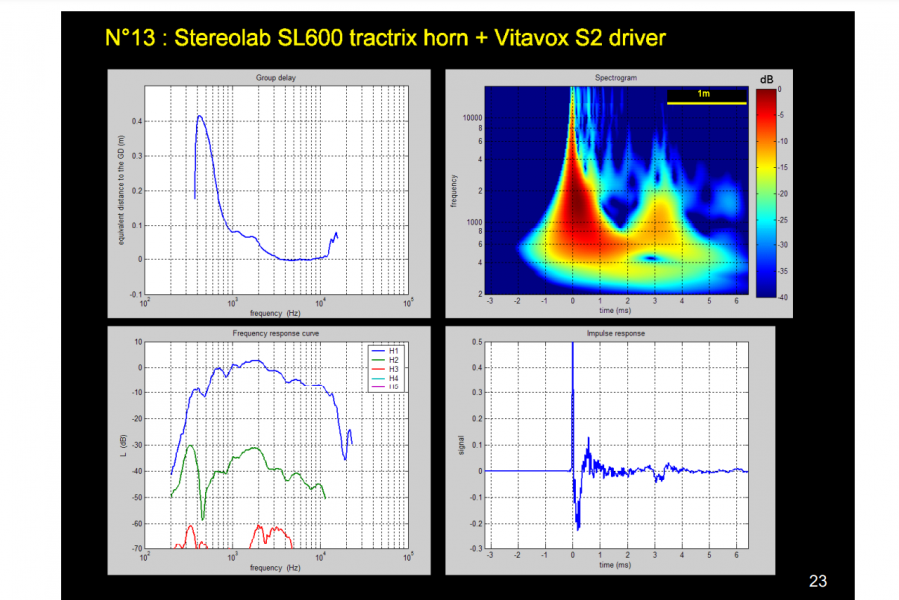Compression drivers / Horn FR graphs ( Vitavox S2 )
- Thread starter andromedaaudio
- Start date
You are using an out of date browser. It may not display this or other websites correctly.
You should upgrade or use an alternative browser.
You should upgrade or use an alternative browser.
Peter is this the one David and Tang are using?
Very nice comparison this frenchmen did .
This unit measures very good , quit surprising 700 Hz - 6 khz Flat
I dont know how your speaker measures but i suppose its something similar as the Vitavox S2 / Stereolab SL 600 combo regarding High Freq extension , so may be it wouldn t be a bad idea to add a high freq unit
For example a + - 102 db spec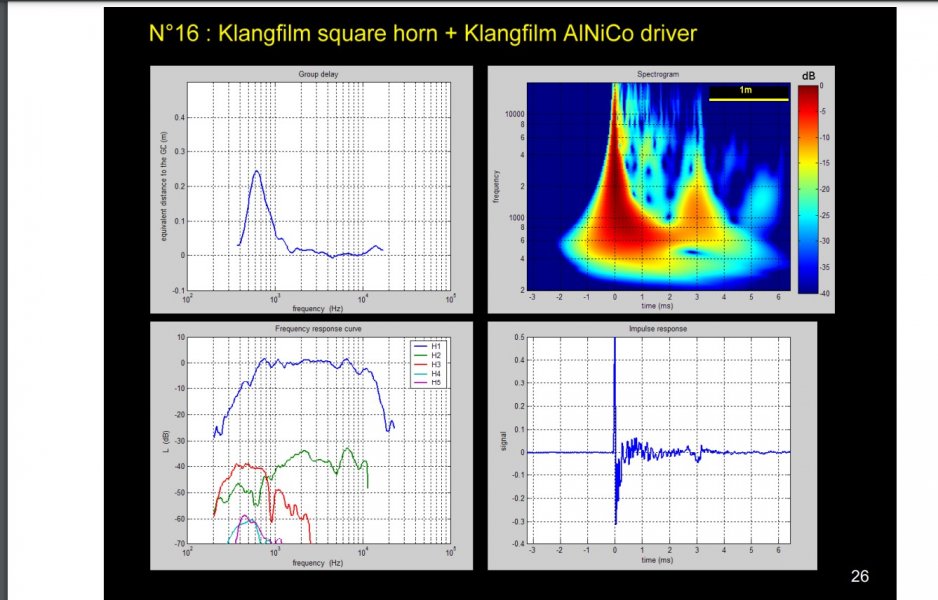

Very nice comparison this frenchmen did .
This unit measures very good , quit surprising 700 Hz - 6 khz Flat
I dont know how your speaker measures but i suppose its something similar as the Vitavox S2 / Stereolab SL 600 combo regarding High Freq extension , so may be it wouldn t be a bad idea to add a high freq unit
For example a + - 102 db spec


Last edited:
I think if i ever was going to do something with Horns it ll be a 2 way system with either the TAD 4001 or TAD 2002 compression drivers , well made with extremely nice flat FR up to 20 khz
The TD-4001 is of the rear compression design, which eliminates the resonance and phase distortion produced by a surround. It also eliminates cavity resonance interference, achieving very flat frequency response, extremely natural sound and superb definition. A phasing plug helps smooth the response of extra high frequencies.
 www.technicalaudiodevices.com
www.technicalaudiodevices.com
The TD-4001 is of the rear compression design, which eliminates the resonance and phase distortion produced by a surround. It also eliminates cavity resonance interference, achieving very flat frequency response, extremely natural sound and superb definition. A phasing plug helps smooth the response of extra high frequencies.
PRO-HF-UNITS — TAD LABORATORIES
Last edited:
Peter is this the one David and Tang are using?
Very nice comparison this frenchmen did .
This unit measures very good , quit surprising 700 Hz - 6 khz Flat
I dont know how your speaker measures but i suppose its something similar as the Vitavox S2 / Stereolab SL 600 combo regarding High Freq extension , so may be it wouldn t be a bad idea to add a high freq unit
For example a + - 102 db spec View attachment 107798View attachment 107799
Andro, I do not know the compression driver or horn that David and Tang have in their speakers. Contact ddk and ask.
my speakers go to about 15,000 Hz. I have not measured them in the room. I do not want to add a high frequency tweeter for extension. I have spoken to people who feel strongly that that would ruin the design of my speaker. They’re just the way I want them. If I had heard issues I would not have bought them.
I think if i ever was going to do something with Horns it ll be a 2 way system with either the TAD 4001 or TAD 2002 compression drivers , well made with extremely nice flat FR up to 20 khz
The TD-4001 is of the rear compression design, which eliminates the resonance and phase distortion produced by a surround. It also eliminates cavity resonance interference, achieving very flat frequency response, extremely natural sound and superb definition. A phasing plug helps smooth the response of extra high frequencies.
PRO-HF-UNITS — TAD LABORATORIES
www.technicalaudiodevices.com
The 4001 lowest crossover point is 600 Hz and the 2002 lowest crossover point is 800 Hz. My crossover is at 500. I would think 500 is better in a two way design, asking the woofer not to go as high. More range for the human voice. Just a guess. Perhaps it doesn’t make such a difference, but I would think for a two-way design, the crossover point would be critical.
what do you think?
Andro, I do not know the compression driver or horn that David and Tang have in their speakers. Contact ddk and ask.
my speakers go to about 15,000 Hz. I have not measured them in the room. I do not want to add a high frequency tweeter for extension. I have spoken to people who feel strongly that that would ruin the design of my speaker. They’re just the way I want them. If I had heard issues I would not have bought them.
Fair enough .
At 15000 hz they are 10 - 13 db down from your midrange SPL (assuming your horn / compression driver combo will produce something similar as the first graph)
Which can make it sound a bit dull on certain recordings .
Last edited:
Regarding the Vitavox S2, I am using two pair in my 6 way horn system. The first is 600Hz - 1kHz in a 250Hx tractrix, second is from 3.2kHz and it rolls off at 12kHz in a 400Hz tractrix. 12kHz and up is handled by a RAAL Lazy Ribbon for which I am considering horn loading.
If you want the best that horns can offer, I would recommend an active system with at least 4 ways. Two way will not cut it...
I think if i ever was going to do something with Horns it ll be a 2 way system with either...
If you want the best that horns can offer, I would recommend an active system with at least 4 ways. Two way will not cut it...
I’m presuming the ‘fourth way’ being active sub base ?Regarding the Vitavox S2, I am using two pair in my 6 way horn system. The first is 600Hz - 1kHz in a 250Hx tractrix, second is from 3.2kHz and it rolls off at 12kHz in a 400Hz tractrix. 12kHz and up is handled by a RAAL Lazy Ribbon for which I am considering horn loading.
If you want the best that horns can offer, I would recommend an active system with at least 4 ways. Two way will not cut it...
I’m presuming the ‘fourth way’ being active sub base ?
Sort of. Enough bass channels to sort out the room frequency response below its Schroder frequency then horn load everything from there on up. For instance, I have three horn loaded channels and the RAAL ribbon above circa 110Hz and that is enough to keep the horns operating optimally (remember a horn is at most a three octave device*, preferably two), but for my room even with a lot of bass absorption (RT60 is 0.2s down to 60Hz!) I need two bass channels below 100Hz to beat the room modes.
*waveguides may operate over a wider frequency range than a true horn
What i find strange is that TAD doesn t supply FR graphs on the website .
Any unit manufacturer usually does that, same goes for Vitavox
Below is a response of a TD 4003 i found on the net , first of all its not flat up to 20 khz , its breaking up after 9 khz

 www.audio-forums.com
www.audio-forums.com
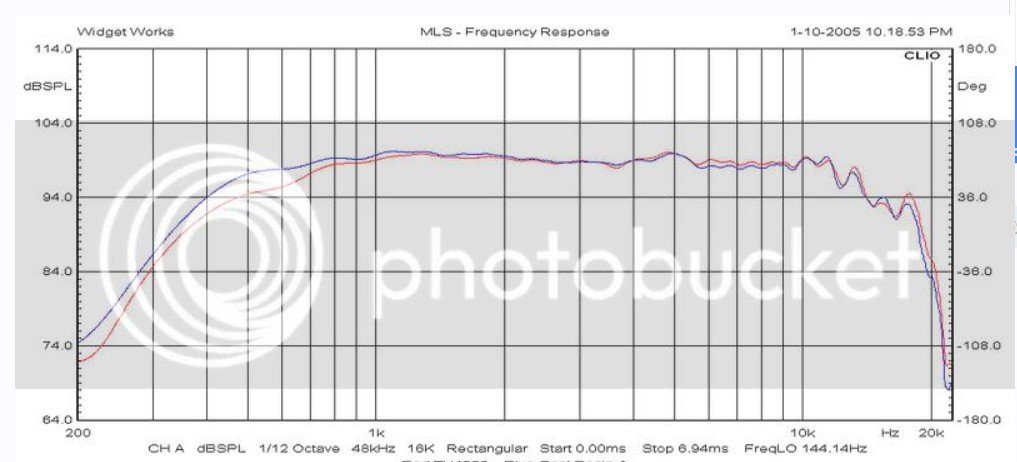
Any unit manufacturer usually does that, same goes for Vitavox
Below is a response of a TD 4003 i found on the net , first of all its not flat up to 20 khz , its breaking up after 9 khz
Tweeter integration on TAD 2402 speakers
Right then... I have TAD 2402's here...love them to bits. Recently i got thinking about integrating one or more tweeters so I bought some Pioneer...
 www.audio-forums.com
www.audio-forums.com

Last edited:
Use a dayton h 812 horn with b&c de 250 driver impressive sound for 1"driver crossover point 800hz really flat to 18khz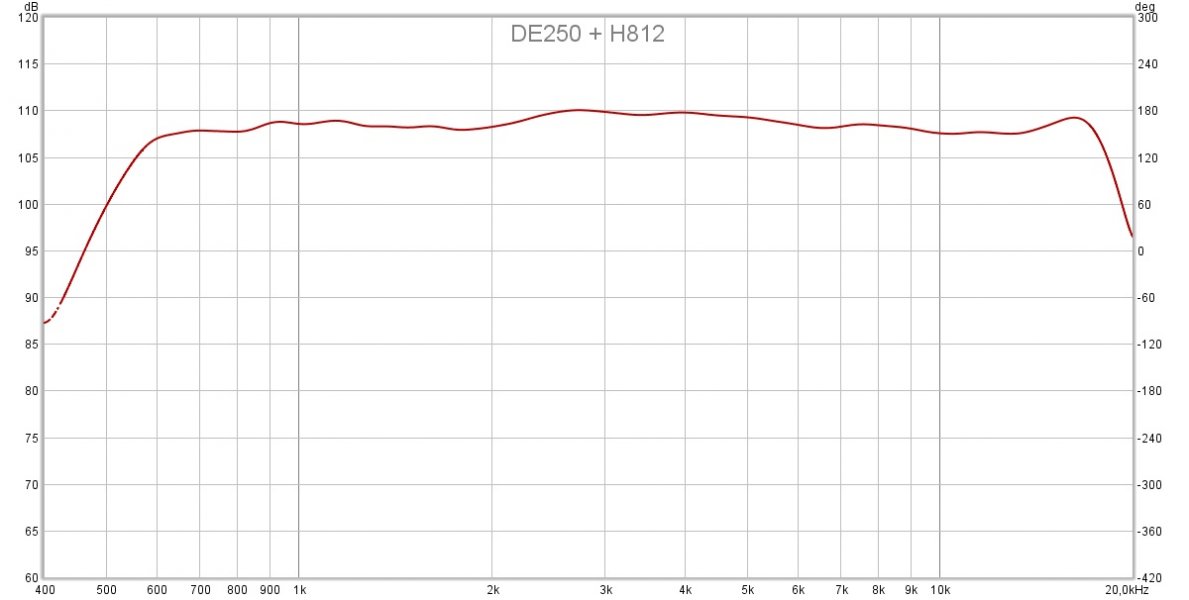
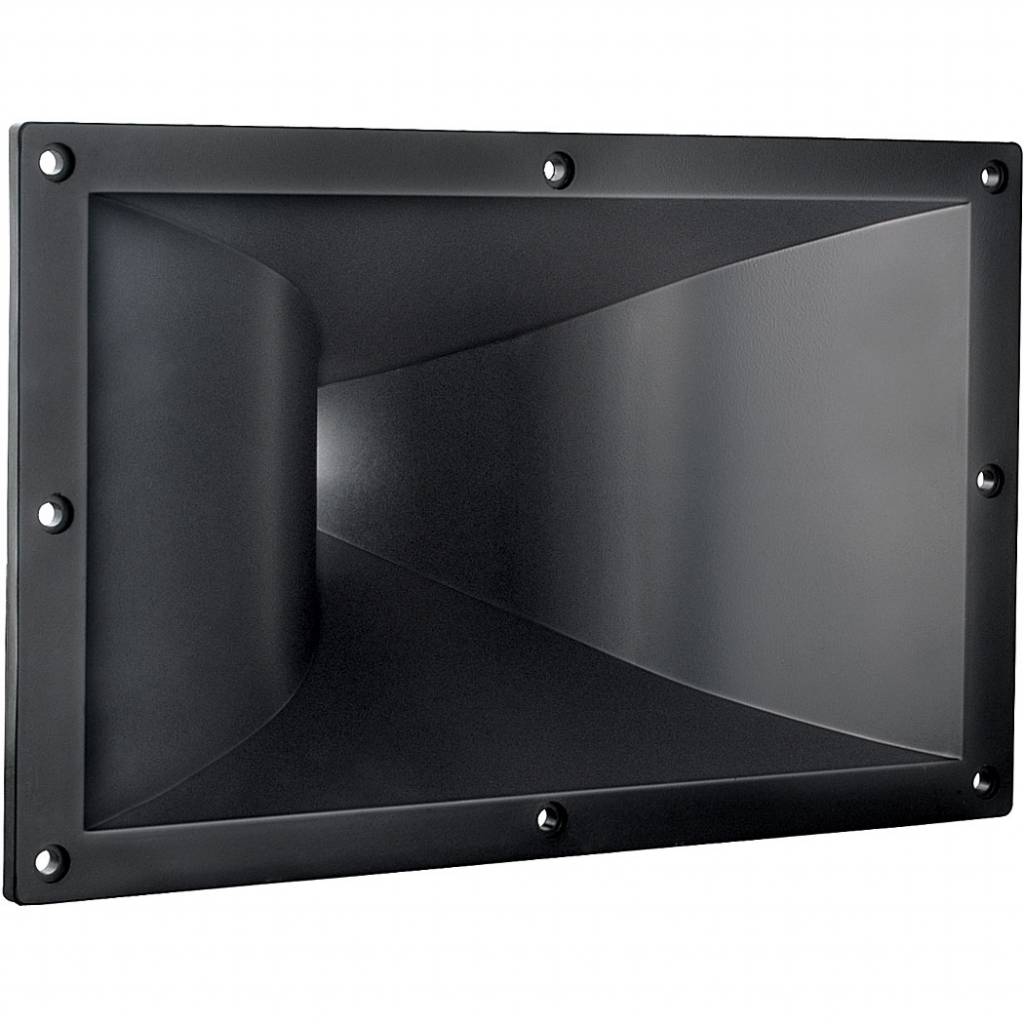
 www.soundimports.eu
Need damping on the back side (blutak)then it is really smooth. From 80hz -1khz use a tone tubby 12" alnico 100db/1 watt. Under 80hz a ripol bass . Ready for party sounds really good
www.soundimports.eu
Need damping on the back side (blutak)then it is really smooth. From 80hz -1khz use a tone tubby 12" alnico 100db/1 watt. Under 80hz a ripol bass . Ready for party sounds really good

 www.tonetubby.com
www.tonetubby.com


Dayton Audio H812 1" Exponential Horn 100x60 2-Bolt kaufen
Bestellen Sie den H812 online bei SoundImports ✓ Versand am selben Tag ✓ Niedrige Versandkosten

Alnico Red - Tone Tubby
The Original Tone Tubby®, the favorite of Carlos Santana and many others. Rock-solid bottom end, silky rolled-off highs, and midrange that speaks to you. With ample clean headroom and plenty of power, this is a superb all-around speaker. 50 watt Listen to Red Alnico Speaker...
 www.tonetubby.com
www.tonetubby.com
Not sure I agree with you. It is VERY difficult to get good coherence in a multi-way speaker setup and most fail to some degree or another. There are some examples of two or maybe 3-way horns that sound very good and can give the dynamic expression that people go to horns for.Regarding the Vitavox S2, I am using two pair in my 6 way horn system. The first is 600Hz - 1kHz in a 250Hx tractrix, second is from 3.2kHz and it rolls off at 12kHz in a 400Hz tractrix. 12kHz and up is handled by a RAAL Lazy Ribbon for which I am considering horn loading.
If you want the best that horns can offer, I would recommend an active system with at least 4 ways. Two way will not cut it...
There are some legendary successful examples:
JBL Hartsfield (in 2 or 3 way config)
Vitavox CN191
JBL Paragon (3 way)
Klipschorn and La Scala (3 ways)
Altec VOTT various forms that are 2 ways
Klangfilm Bionors
etc.
Don't like the sound of plastic diaphragm compression drivers. Ring radiators are better but a good metal dome design to me still sounds the most realistic.Use a dayton h 812 horn with b&c de 250 driver impressive sound for 1"driver crossover point 800hz really flat to 18khzView attachment 107941
Need damping on the back side (blutak)then it is really smooth. From 80hz -1khz use a tone tubby 12" alnico 100db/1 watt. Under 80hz a ripol bass . Ready for party sounds really good
Dayton Audio H812 1" Exponential Horn 100x60 2-Bolt kaufen
Bestellen Sie den H812 online bei SoundImports ✓ Versand am selben Tag ✓ Niedrige Versandkostenwww.soundimports.eu

Alnico Red - Tone Tubby
The Original Tone Tubby®, the favorite of Carlos Santana and many others. Rock-solid bottom end, silky rolled-off highs, and midrange that speaks to you. With ample clean headroom and plenty of power, this is a superb all-around speaker. 50 watt Listen to Red Alnico Speaker...www.tonetubby.com
Everyone has their preferences, you don't have to copy them. I just wanted to show that there are other ways than Tad. too expensive for me for what they deliver.Don't like the sound of plastic diaphragm compression drivers. Ring radiators are better but a good metal dome design to me still sounds the most realistic.
Not sure I agree with you. It is VERY difficult to get good coherence in a multi-way speaker setup and most fail to some degree or another
Thats were measuring comes in .
Just stacking up drivers and adjusting everything by ear is bound to fail.
Thats my opinion
The 4001 lowest crossover point is 600 Hz and the 2002 lowest crossover point is 800 Hz. My crossover is at 500. I would think 500 is better in a two way design, asking the woofer not to go as high. More range for the human voice. Just a guess. Perhaps it doesn’t make such a difference, but I would think for a two-way design, the crossover point would be critical.
what do you think?
Hello Peter
I think it is driver/woofer dependent. You can always generalize but there will always be exceptions that will work quite well above 500 Hz in a 2 way design.
Rob
The horn sizes themselves provide a barrier to getting a reasonable time alignment on the speaker...not talking actual time coherence but something that sounds reasonably coherent...Thats were measuring comes in .
Just stacking up drivers and adjusting everything by ear is bound to fail.
Thats my opinion
The horn sizes themselves provide a barrier to getting a reasonable time alignment on the speaker...not talking actual time coherence but something that sounds reasonably coherent...
And what about Freq response ?
Unless you conceive yourself as having " Golden ears " lol , measuring FR is far more accurate then your ears.
Perhaps it doesn’t make such a difference, but I would think for a two-way design, the crossover point would be critical.
what do you think?
I think in every loudspeaker design, but, especially, in a two-way design, the crossover point is critical.
Not that I went to loudspeaker design school over the weekend, but I would prefer a 500Hz crossover point over an 800Hz crossover point on the ground that the 800Hz crossover is breaking the midrange frequency range into two big pieces. 500Hz is more in the lower midrange.
Similar threads
- Replies
- 0
- Views
- 928
- Replies
- 0
- Views
- 1K
- Replies
- 0
- Views
- 1K
- Replies
- 0
- Views
- 402


